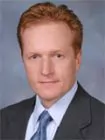On October 20, 2011, the Federal Energy Regulatory Commission
("Commission") issued a final rule establishing a
two-part market-based rate compensation methodology for the
provision of frequency regulation service in Regional Transmission
Organization ("RTO") and Independent System Operator
("ISO") markets. Frequency Regulation Compensation in
the Organized Wholesale Power Markets, Order No. 755, 137 FERC
¶ 61,064 (2011) ("Order No. 755"). When generation and load
(plus losses) are not balanced, the frequency of the electric grid
deviates from its design frequency of 60 hertz (e.g., 60
cycles per second). Frequency regulation service corrects actual
and anticipated deviations in the frequency of the electric grid,
which are measured by Area Control Error, by continuously balancing
resources with load. The cost of providing regulation service
generally is borne by customers serving load in the balancing
authority area where the relevant resources are located. At
present, different markets have different methods for compensating
providers of frequency response service. Order No. 755 reforms the
approach used to compensate these suppliers but does not require
changes in the way in which related costs are allocated to
load.
Frequency regulation service is provided by online generation whose
output is raised or lowered (primarily through the use of automatic
generating control equipment) and by other nongeneration resources
such as flywheels or energy storage resources capable of providing
this service. Under Order No. 755, generators or other entities
providing this service will be compensated in a two-part structure.
First, regulation service providers will receive a capacity payment
reflecting the opportunity costs of the marginal resource providing
frequency regulation service during the settlement period. This
approach acknowledges that a frequency response resource must hold
some of its capacity in reserve to provide frequency regulation
service when such service is needed, and therefore the resource
forgoes the revenue it could otherwise earn through energy market
sales.
Order No. 755 also allows for the recovery of inter-temporal
opportunity costs, such as costs incurred by an energy storage
device that must provide frequency response service at a time of
day when it would be more cost-effective for it to buy energy to
recharge the storage device. Order No. 755 leaves the specific
methods for calculating such opportunity costs to individual
regional markets, explaining that the operators of the separate
regional organized markets are "in the best position to
perform accurate cross-product opportunity cost calculations."
With regard to inter-temporal costs, Order No. 755 requires that
such costs be verifiable, but it allows individual regional market
operators to determine whether these costs should be determined by
the ISO or RTO or by market participants.
The second component of regulation service compensation is
"performance-based" and will reflect the amount of the up
or down movement a resource provides in response to the system
operator's dispatch signal and the resource's accuracy in
responding to the dispatch signal. This approach accounts for the
fact that a resource with faster ramping capability can provide a
greater amount of capacity into the regulation market than can a
slower-ramping resource.
In Order No. 755, FERC explains that the current system for
compensating providers of frequency regulation service is unjust
and unreasonable because it "fail[s] to acknowledge the
inherently greater amount of frequency regulation service being
provided by faster-ramping resources," and because the
practices of some ISOs and RTOs result in economically inefficient
dispatch of frequency regulation resources. As a result, Order No.
755 is expected to lead to more regulation service being provided
by faster-responding resources and by technologies that are more
efficient at providing frequency regulation service, while fewer
slow-response resources will be called upon. This approach is
intended to promote market efficiency by better aligning incentives
and performance by ensuring that resources that provide greater
benefits are appropriately compensated. FERC also noted that these
efficiencies may lead to lower prices for regulation service and
for energy.
Order No. 755 becomes effective 60 days after publication in the
Federal Register, i.e, on or about January 1, 2012. ISOs
and RTOs are required to submit compliance filings amending their
tariffs to incorporate the requirements of the rule within 120 days
of the effective date of the rule. The Commission noted that
implementing the required changes could require significant work on
the part of ISOs and RTOs, and accordingly it will allow an
additional 180 days from the date ISOs and RTOs make their initial
compliance filings for the ISOs and RTOs to implement the changes.
As such, it is likely that the changes mandated by Order No. 755
will not take effect for approximately one year.
While Order No. 755 applies only to organized ISO and RTO markets,
FERC may act to broaden its application. On June 11, 2011, FERC
issued a Notice of Inquiry ("NOI") seeking
comment on whether the cost-based compensation methods for
frequency regulation in regions outside of organized markets should
be adjusted to address the same issues addressed in Order No. 755.
Third-Party Provision of Ancillary Services; Accounting and
Financial Reporting for New Electric Storage Technologies,
Notice of Inquiry, 135 FERC ¶ 61,240 (2011). In the NOI, FERC
sought comments on different frameworks under which the speed and
accuracy of frequency regulation resources might be appropriately
valued in non-RTO and non-ISO markets. The matter is pending before
FERC.
The content of this article is intended to provide a general guide to the subject matter. Specialist advice should be sought about your specific circumstances.



